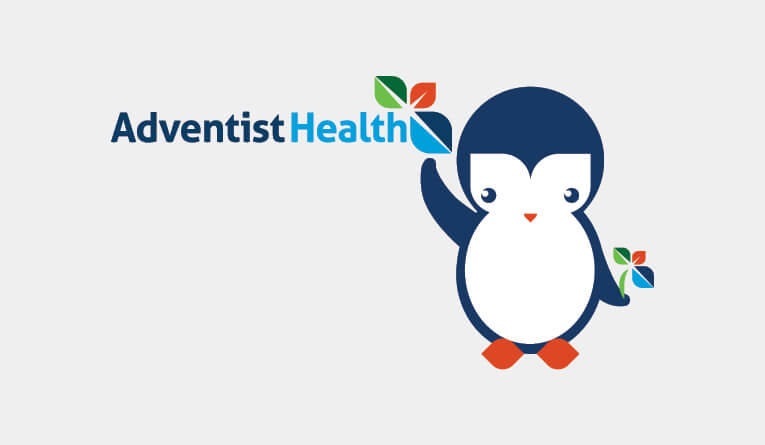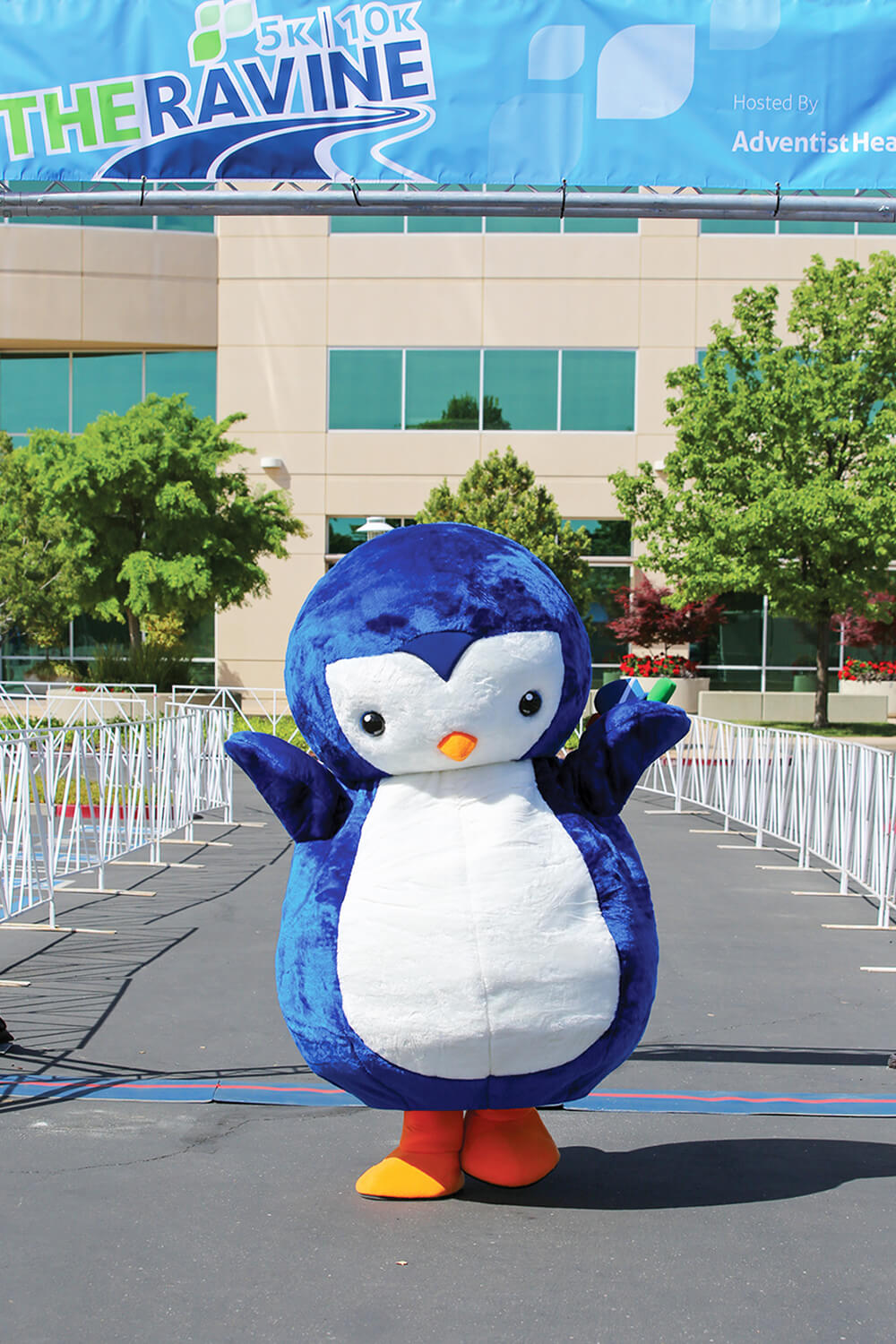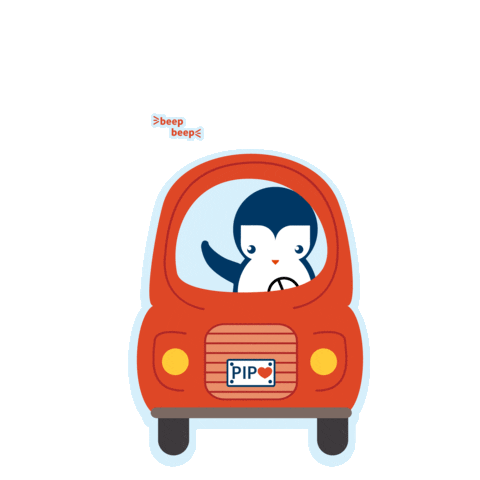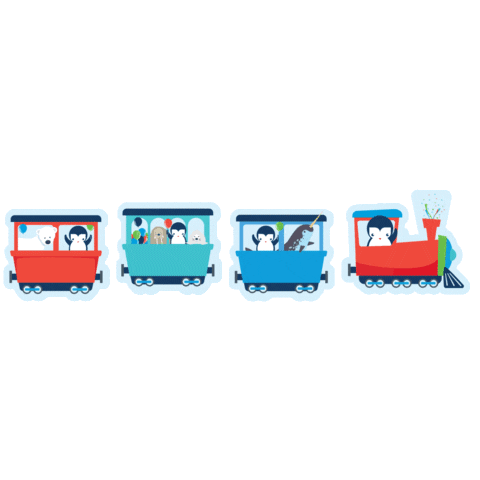Meet Pip
Pip is the mascot of Adventist Health’s children’s and maternity health services. Pip’s role is as both a branding design element and a fun character to entertain kids and help them feel at ease. The following guidelines explain how Pip should be used.

Pip’s Attributes
When creating two-dimensional graphics, it is necessary to use the full-frontal view of Pip, unless other approved versions are designed by Marketing. Side or rear-angle views are not permitted. To refer to Pip, it is important to use gender-neutral language and avoid using “he” or “she.” It is preferable to write about Pip in the first person, using “I,” as in Pip’s Story. Pip is always depicted holding the Adventist Health brand symbol flower. Pip is only shown in the poses below and does not wear outfits or hold props. Pip’s wings can be raised or “flapped,” and the feet can be positioned at different angles. The white highlights in the eyes can be adjusted to indicate that Pip is looking in a specific direction. However, the beak cannot be modified. In animated versions, Pip should move in a manner similar to the waddling of real penguins.
Pip Poses

Pip Usage Guidelines
As our official kids’ mascot, Pip is welcome everywhere children’s services are offered. Pip can be placed on all pediatrics-related printed materials, apparel, accessories, promotional items, blankets, banners, signage and wall art.
Pip should be no smaller than ¾” tall in non-digital uses. In digital, Pip should be no smaller than 50 pixels. If Pip is used next to the Adventist Health logo, the standard logo padding must be followed: keep a safe area between Pip and the logo equal to the size of the largest leaf in the logo’s brand symbol.
Minimum size for print and digital (not to scale)

Lock-up and the Adventist Health logo

Approved Colors
Penguins don’t come in a lot of colors. And Pip is only available in the single full-color version with approved colors from the Adventist Health palette and a black and white version. Pip’s face and torso are white and must remain white, even when Pip is on a non-white background.
When Pip is used as a stand-alone graphic, it must be used on white or a solid color with no more than 20% opacity. In most cases, this color should be one of the brand colors. If Pip is used on a photo, Pip must be placed on an opaque section of the visual. For example, Pip should not be placed partly on ice and partly on water, but on a solid section of ice or solid water.

Pip & Friends
The easiest way to distinguish Pip from their friends is by whether or not they are holding the Adventist Health brand symbol, which is designed to resemble a flower. On the other hand, Pip’s friends can be seen wearing outfits and holding props.
Pip is unique and should not be used with illustrations of other penguins. Do not create any Pip-like penguin characters of your own. And do not use Pip in a group of other, cloned Pips unless you are creating a pattern for design purposes, such as a wallpaper-style decoration. Pip can have friends from other species. You are encouraged to use Pip with photos or illustrations of kids, if you desire.

Pip Usage Do’s

Do use Pip on all pediatrics-related printed materials, apparel, accessories, promotional items, blankets, banners, signage and wall art.

Do keep Pip at least ¾” tall in nondigital uses and 50 pixels tall in digital uses.

Do use Pip in the approved colors only, regardless of the background colors.

Do keep Pip’s face and torso white regardless of background colors.
Pip Usage Don’ts

Don’t alter the basic design of Pip or create other characters.

Don’t use Pip in other colors.

Don’t place Pip encroaching on our logo.

Don’t feature Pip or friends eating unhealthy foods.
Pip in Action


Coloring Book & Pages

Social Media


Vehicle Wraps


Wall Art

Animated GIFs & Stickers













Holidays & Celebrations

